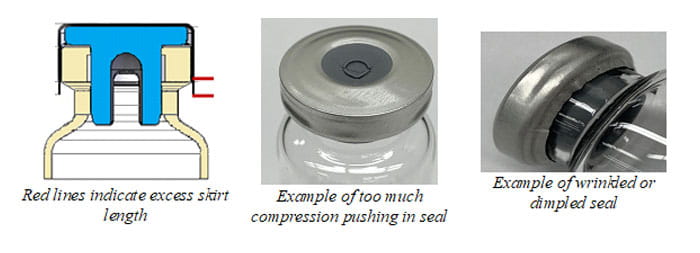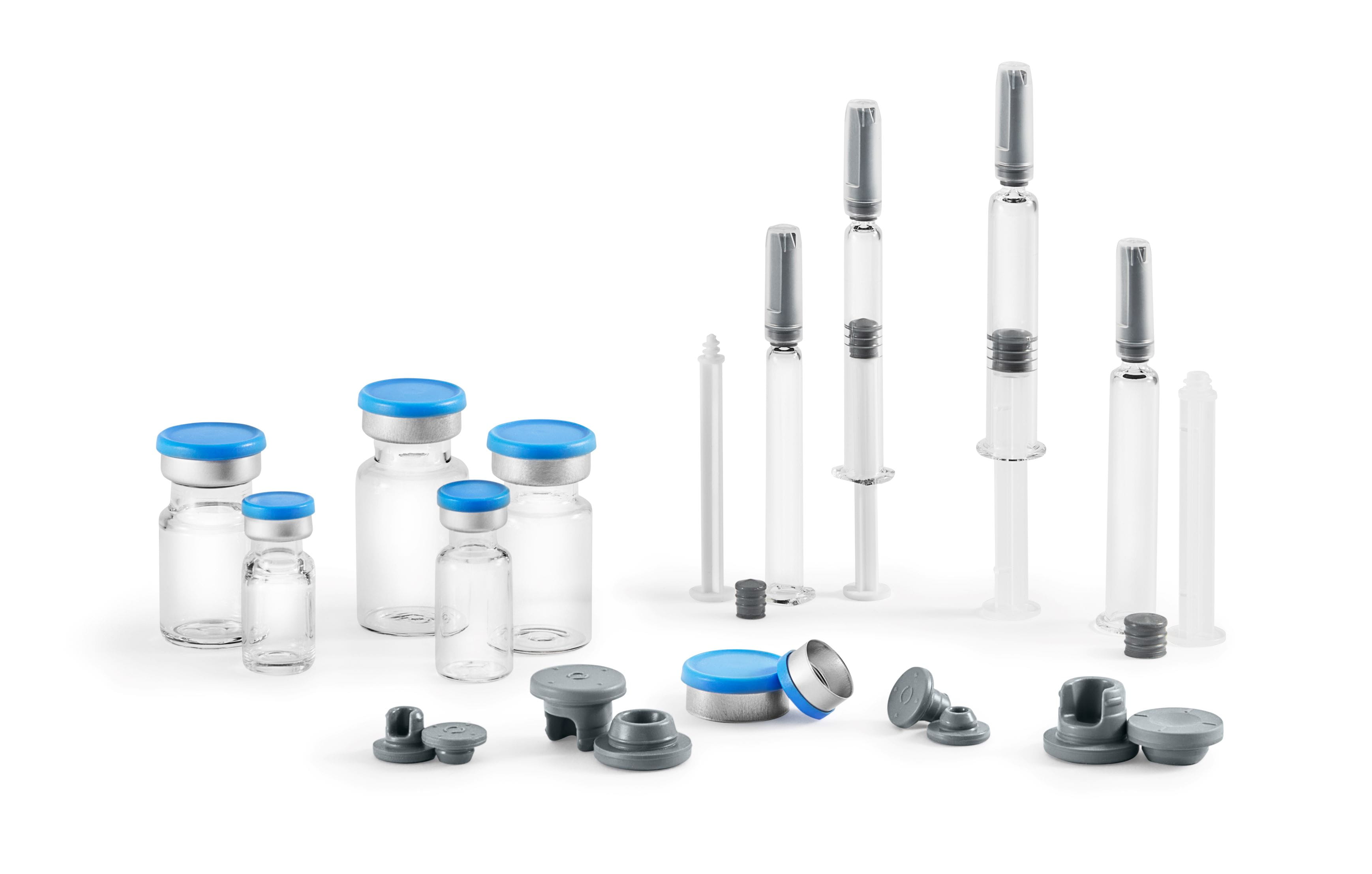Consistent Crimp, Consistent CCI
Container closure integrity (CCI) is a critical factor every drug manufacturer and compounder is required to achieve. To achieve CCI, one must consider factors such as vial material, blowback, and stopper design. One vital factor – too often an afterthought – is the aluminum seal.
![]()

Example of a good crimp and seal
Although considered a secondary component (since it does not contact drug product), the importance of a proper seal and crimp cannot be overstated. Three aspects of achieving a proper crimp are: skirt length, compression force, and cosmetics.
Skirt Length: This is the length of the aluminum part of a seal. Ideal skirt length is determined based on the stopper flange height, the vial crown height, and the percent compression used. If a skirt is too short, CCI may be risked. If the skirt is too long, the appearance of the system may cause the perception of lack of CCI.
Compression Force: This is the force used during the crimping process to push seals down onto the stopper/vial system. If systems are not sufficiently compressed during fill/finish, CCI may not be achieved. Excessive compression can cause the stopper to push through the hole in the top of the seal.
Seal Cosmetics: This relates to the appearance of the aluminum skirt of the seal post-crimping, particularly around the bottom of the crown of the vial. This appearance ought to be smooth, with no visible “wrinkles.” Wrinkles may pose a CCI risk and may result in rejected product.

West is able to offer both preliminary and detailed recommendations to help companies select seals. West’s Integrated Solutions lab team can help prepare a closure container system to meet FDA guidelines. Contact us today for more information.













